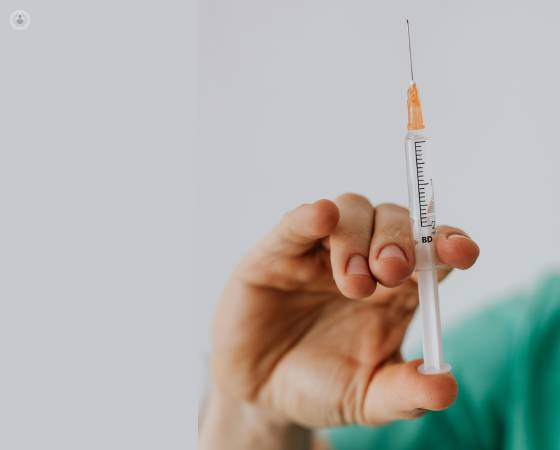What to know about joint steroid injections
Written in association with:Joint steroid injections, also known as cortisone injections, are a way to alleviate pain and inflammation in a joint. In this article, Dr Siobhan Graham, a GP from Belfast, explains how joint steroid injections work, and which conditions they can help with.

What are joint steroid injections?
Joint steroid injections are composed of corticosteroid medicines such as hydrocortisone, triamcinolone, and methylprednisolone, and can be administered by rheumatologists, orthopaedic surgeons, some physiotherapists, and GPs with specialised training.
The injection is done directly into the affected joint or the tissue around it, and one session should take less than an hour. The medicine mimics the effects of hormones found in the adrenal glands, such as cortisol, which reduces inflammation by acting against the inflammatory agents, thus helping with pain and stiffness while also improving mobility.
When are joint steroid injections used?
Joint steroid injections are typically offered to patients who have severe pain that has not responded to alternative medication or treatments and continues to deteriorate.
Steroid injections can treat swelling and inflammation of tendons and joints, such as the following conditions:
- Rheumatoid arthritis
- Gout
- Osteoarthritis
- Tennis and golfer’s elbow
- Carpal tunnel syndrome
- Frozen shoulder
- Rotator cuff injuries
- Bursitis
- Capsulitis
What happens during a joint steroid injection?
Often, the steroid injections are administered after a local anaesthetic is injected, so after the initial prick of the anaesthetic injection, there should not be pain as much as there is a slight discomfort and pressure. The anaesthetic usually wears off after an hour, after which there may be soreness or bruising around the injection site.
After receiving a joint injection, patients should rest the joint for at least a day. Some patients may experience a flare-up of their condition (for example, their arthritis), due to the steroids irritating the area, but this should fade within a day. Patients are encouraged to be gentle with the joint or tendon for a week and avoid straining it, after which they can begin doing strengthening stretches and exercises to regain use of the joint while also fortifying support structures around it.
If you have joint pain or weakness, you can consult with Dr Graham via her Top Doctors profile.


